 by our College Data Analytics Team
by our College Data Analytics TeamUSCB total enrollment is approximately 2,006 students. 1,670 are undergraduates and 5 are graduate students.
Male/Female Breakdown of Undergraduates
The full-time USCB undergraduate population is made up of 69% women, and 31% men.
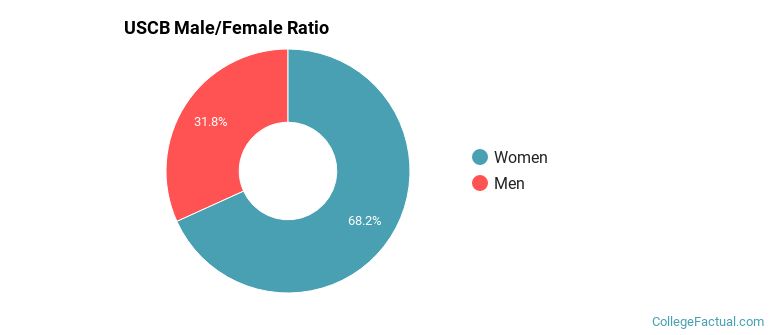
For the gender breakdown for all students, go here.
USCB Racial/Ethnic Breakdown of Undergraduates
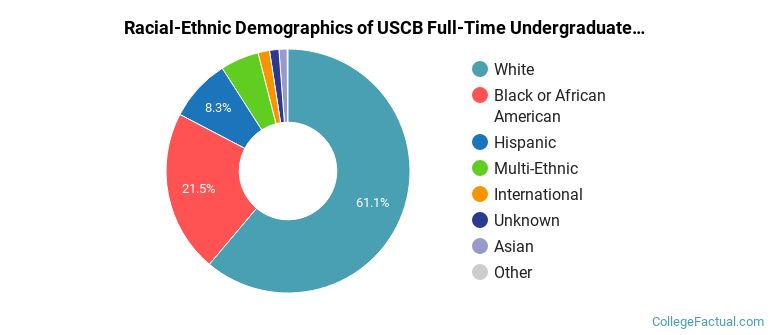
| Race/Ethnicity | Number |
|---|---|
| White | 1,045 |
| Black or African American | 328 |
| Hispanic | 157 |
| Multi-Ethnic | 72 |
| International | 25 |
| Unknown | 20 |
| Asian | 16 |
| Native Hawaiian or Pacific Islander | 1 |
See racial/ethnic breakdown for all students.
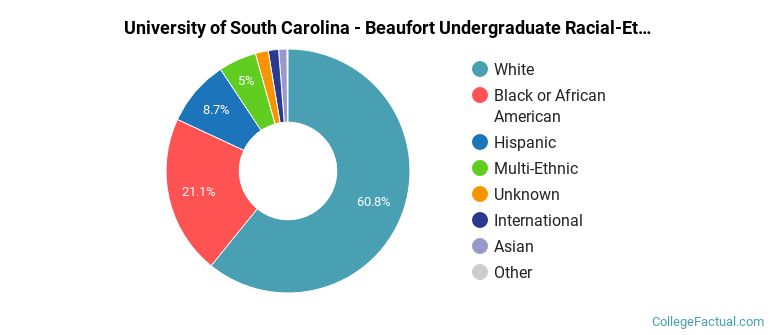
| Race/Ethnicity | Number |
|---|---|
| White | 1,235 |
| Black or African American | 402 |
| Hispanic | 185 |
| Multi-Ethnic | 89 |
| Unknown | 29 |
| Asian | 28 |
| International | 27 |
| Native Hawaiian or Pacific Islander | 3 |
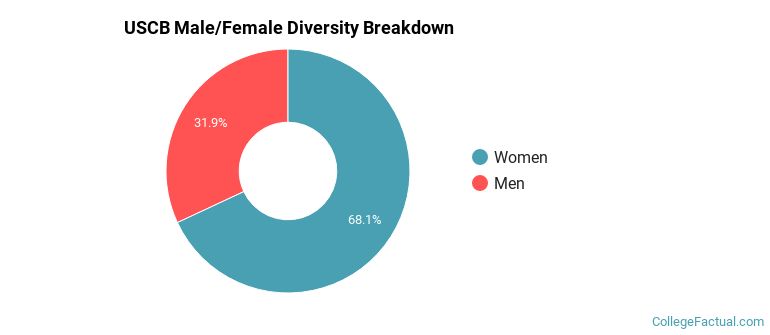
There are approximately 1,359 female students and 647 male students at USCB.
USCB ranks 1,141 out of 2,183 when it comes to geographic diversity.
16.67% of USCB students come from out of state, and 1.44% come from out of the country.

The undergraduate student body is split among 22 states (may include Washington D.C.). Click on the map for more detail.
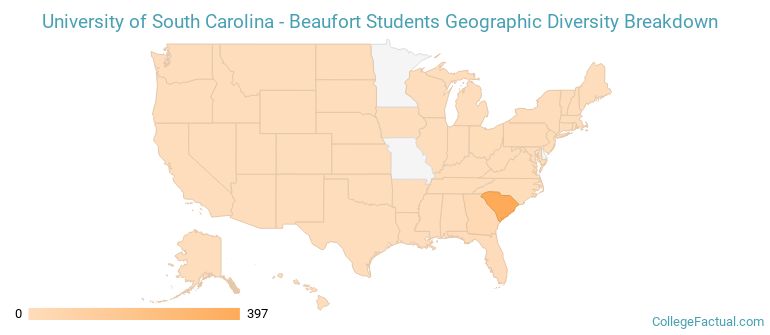
| State | Amount |
|---|---|
| South Carolina | 397 |
| Georgia | 33 |
| Pennsylvania | 7 |
| Florida | 6 |
| North Carolina | 3 |
Students from 14 countries are represented at this school, with the majority of the international students coming from Canada, United Kingdom, and Sweden.
Learn more about international students at USCB.
A traditional college student is defined as being between the ages of 18-21. At USCB, 62.88% of students fall into that category, compared to the national average of 60%.

| Student Age Group | Amount |
|---|---|
| 18-19 | 668 |
| 20-21 | 638 |
| 22-24 | 390 |
| 25-29 | 146 |
| 35 and over | 123 |
| 30-34 | 78 |
| Under 18 | 0 |
Footnotes
*The racial-ethnic minorities count is calculated by taking the total number of students and subtracting white students, international students, and students whose race/ethnicity was unknown. This number is then divided by the total number of students at the school to obtain the racial-ethnic minorities percentage.
References
Department of Homeland Security Citizenship and Immigration Services
Learn more about how College Factual creates their Diversity Rankings.